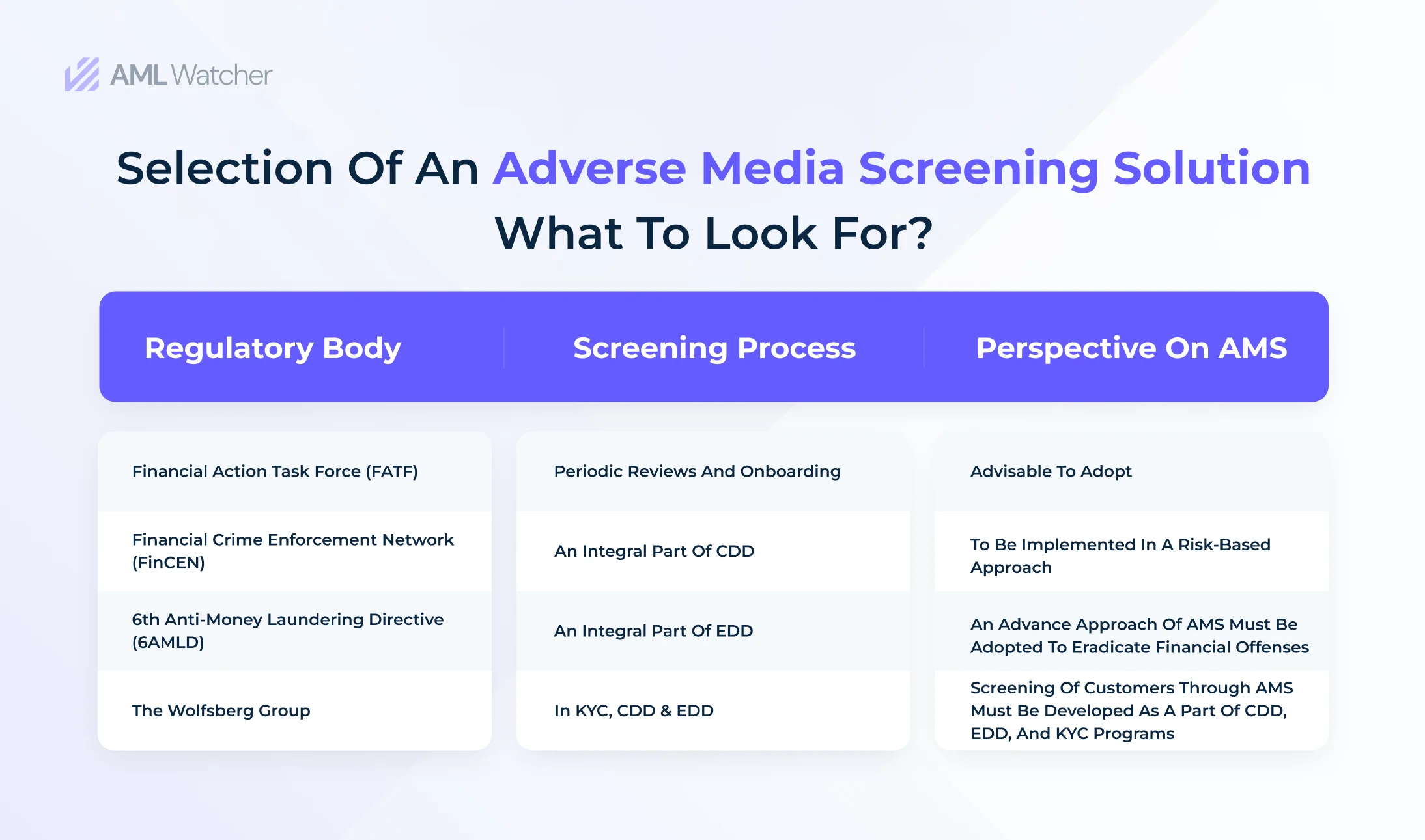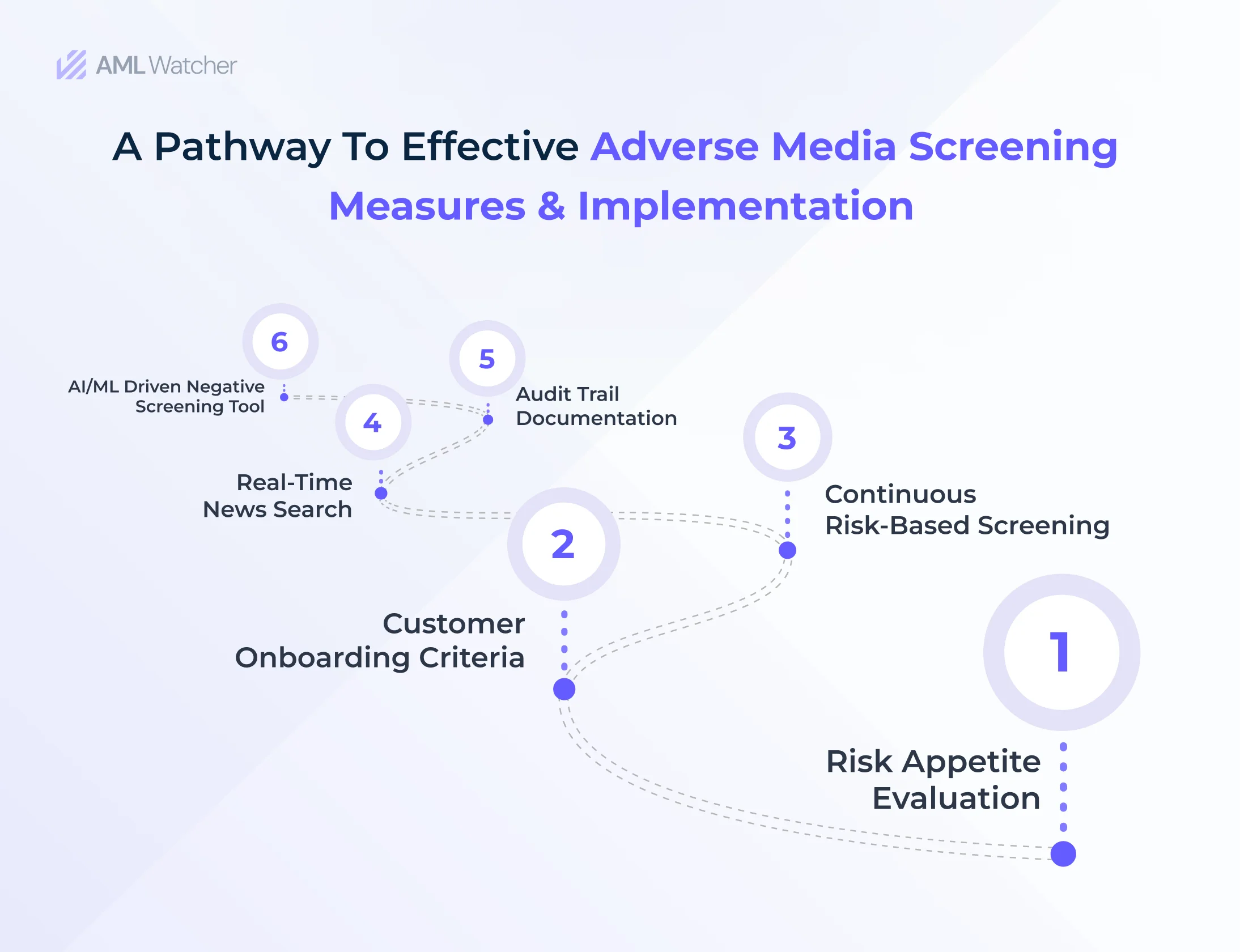
Adverse Media Screening to Improve Security Process
In a heavenly saturated data and compliance landscape, other than meeting the regulatory standards, the financial institutions and industries like law enforcement, insurance, trade and supply chain, health and travel face a great challenge in the implementation of risk based screening approach due to limited negative news or media screening of their client base. Growing at the rate of 10.8%, the financial industry is likely to reach $37.343 trillion by 2026 and the need for combating financial crimes and implementing risk management programs is crucial more than ever. In addition to AML (anti-money laundering), KYC (know your customer) and CDD (customer due diligence), the identification of reputationally exposed persons (REPs) through adverse media screening allows institutions to deter potential frauds, money laundering and bribery risks based on the guidelines outlined by the regulatory bodies. Adverse media monitoring being used by the institutions as their customer onboarding process and in periodic reviews enable them to stay compliant with the regulatory requirements and avoid reputational risks.
In this blog, we will walk you through a comprehensive analysis of why and how adverse media checks are not just a box to fill but an integral and most wanted screening protocol your business security and success can benefit from.
Elevated Business Security Why Do You Need Negative News Screening
With the detection rate of only 1%, financial crimes cost the institutions $1 trillion to $3 trillion globally. If you are an enterprise with a large volume of customers all across the world to deal with every day, how do you make sure not to fall for their potential financial crime capacity and protect the integrity and compliance security of your business? Contrary to the absence of screening measures, most corporations and financial institutions suffocate their safety net with manual screening processes, resulting in inefficient outcomes and costly compliance consequences. With no systematic measures and risk prioritization in practice, the investigation is burdened with enormous data of customers to be analyzed leaving a big room for human errors and crime actors to bypass the red alert. In the complex and saturated climate of data with 2.5 quintillion bytes being produced by humans on a daily basis, finding what is most wanted is not impossible if not easy and adverse screening does that for you.
Other than identifying a potential threat, negative news screening solutions help your business in developing a proactive approach and avoiding those elements capable of harming security framework in future. Simplifying the threat environment and reducing the hardcore manual labor of crime investigators while performing due diligence, adverse media solutions embedded with artificial and human intelligence have pushed the businesses to implement more promising and credible screening measures similar to online adverse media screening tools.
Compliance and Security Need Unified
Where millions of dollars flow down to financial crime activities powered by more developed ways to carry out the criminal activities, the regulated enterprises are posed to unknowingly facilitating these established crimes and facing compliance and legal apprehensions. The need for an enhanced compliance experience and security of business integrity pushes the industry to develop and adopt reliable screening protocols such as online adverse media checks to detect and counter financial criminal activities. Some other highlighted reasons to implement this screening shift are,
Reinforcing Compliance Regulations
With a rise in sophisticated crime threats, the regulatory bodies from across the world have made it necessary for the financial institutions and other businesses to mitigate the established risks by implementing robust screening measures. While dealing with high-risk clients or partners, the Financial Action Task Force (FATF) urges institutions to implement adverse scanning as an imperative part of due diligence enhanced for influential customers. The negative news screening against such clients allows businesses to identify if the potential client has ever been investigated or put under scrutiny of compliance breach.
The equal importance of adverse searches has been imposed by FinCEN (Financial Crimes Enforcement Network) while conducting risk based management of criminal threats. Applied within the risk-based approach of combating financial crimes, media screening enables the crime fighters to determine and lay out the plan to handle a potential criminal activity.
In addition to existing compliance standards of AML, the 6th Anti-money Laundering Directive (6AMLD) has introduced a list of predicate offenses emphasizing institutions to comply with a more advanced approach of implementing adverse media searches along with enhanced due diligence for specific individuals or businesses.
The inadequate measures in the implementation of compliance tools and financial -crime whistleblowers can lead your business to lose its market value and investors while getting charged with hefty fines. However, FATF in its regulatory updates encourages institutions and other businesses to opt for more reliable, accurate, and precise solutions for screening to reinforce regulatory changes within the financial climate.
Effective Adverse Media Screening Favorable Practices
Contrary to politically exposed persons (PEPs) and sanctions screening, the structure of adverse media monitoring is less intricate but leaves a broad space for optimization and interpretation of data. Identification of risks through compliance measures is crucial for institutions to automate and balance the searches in adverse screening. The presence of optimal and reliable procedures in implementing the screening process helps businesses to figure out when to conduct screening and how to respond to generated alerts. Let’s take a look at the standard and promising guidelines to perform adverse media checks enabling your business to identify potential threats and fight financial crimes while staying ahead of the compliance curve.
- Define the degree of risk (usually termed as risk appetite) you need to assess which includes types of offense, relevancy of crime with evaluating entity, magnitude of corrective measure, and capacity of potential offense to get worse over the time.
- Set the instructions or policies on when to conduct screening which ideally interpret the addition of scanning at the time of customer onboarding as a part of CDD.
- Conduct the screening on an ongoing basis including all customers supported by risk-based mitigation measures.
- Screen all customers on a regular basis through automated adverse news screening.
- Implement a credible and authentic search resource with real time and automated updates to look for current news or events
- Develop an organized trail of audit and documentation in the support of screening decision
- Implement an automated and consolidated negative news screening solution embedded with AI advancements and Natural Language Processing (NLP) technology.
Orchestration of Consolidated Screening Tool Indispensable Features
You have developed an ecosystem with fostering an effective environment for anti-financial crime activities, but the implementation of a credible negative news screening tool with efficient and quick outcomes is keeping you behind the compliance track. With many online adverse media checks available, it is crucial to choose a screening solution which is reliable, refined, robust, and relevant meeting the specific needs of your business. With an ability to assess risks precisely and timely, a robust screening tool is orchestrated on below facets.
Keyword Optimization
A search conducted through typically available search engines can result in a pool of outcomes irrespective of relevancy to your search making it hard to find what you are looking for. With the probability of increased false positives and even worse false negatives, the boolean entries can somehow create more relevant results while not eliminating the difficulty of adverse event identification. However, the screening solutions embedded with carefully curated keywords strengthen your institution’s compliance measures with precise detection of target entries and desired customization of refined outcomes driven by a set of relevant keywords.
Boolean Searches replaced by Natural Language Processing
The implementation of NLP into screening tools has made it easy for institutions to find what matters and break through the noise. The processing allows screening tools to navigate the requirements of human inputs and beyond the premises of keywords, natural language processing segregates the risks based on set parameters including regulatory violations and history of financial crimes. Reinforcing the compliance measures and risk management program, adverse media solutions driven by NLP allows institutions to eradicate financial crime and reputational risks.
Aggregation of Data: Informed Decision Making
Overcoming the transliteration and language barriers, the ability of negative news checks to aggregate data from credible sources enable the screening process to identify connections which could have been neglected in the sea of unstructured information. Crafting a risk profile of an entity against the set rules, automated adverse news screening tools facilitate timely and effective decision making and implementation of required measures against the generated alert.
Streamline Your Compliance and Security Needs A Sophisticated AML Solution by AML Watcher
Enabled with biometric identification of potential entities and systematic algorithms based on machine learning, AML Watcher allows your business to perform screening through its in-house developed adverse media monitoring tool.
Whether you are a financial institution or dealing with reputationally tinted clients in a law enforcement organization, travel and health agency, the implementation of a vigilant adverse media screening into your monitoring measures has covered your back to detect and prevent potential financial and non-financial crimes and compliance risks.
Abolishing the uncertainties of false positives, AML Watcher implements fuzzy logic in its extensive databases and segregates what is valid and what is specious. In the world of gains-driven atmosphere, trespass the ambiguity against a potential client and protect your business reputation because the universe is expanding and so will the ways to grow in it.
We are here to consult you
Switch to AML Watcher today and reduce your current AML cost by 50% - no questions asked.
- Find right product and pricing for your business
- Get your current solution provider audit & minimise your changeover risk
- Gain expert insights with quick response time to your queries





